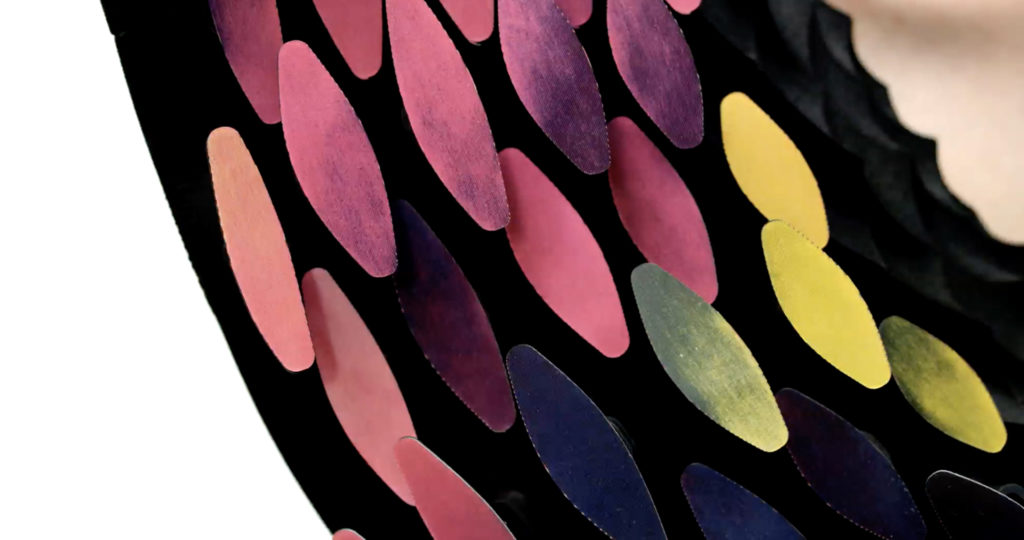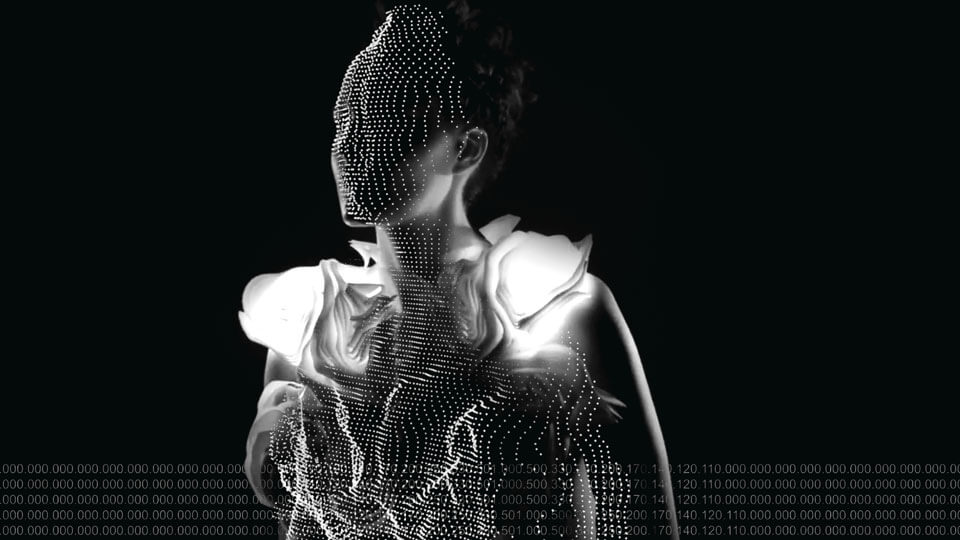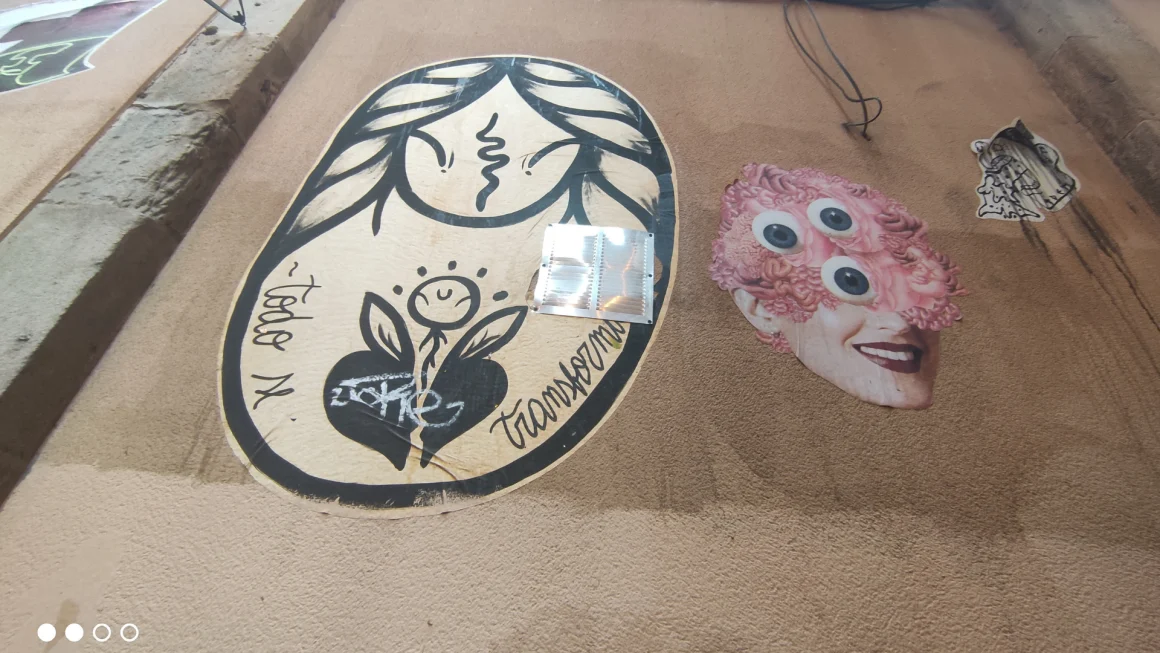WHAT IT IS?
“Fashion is composed in the ‘spirit of time’ of each society. Each season weaves certain forms, and it is mainly about the skin, ‘a subjectivity’ that has gained the privileged place of being both in the body and in the world ”(SANT’ANNA, 1995)
If it is a consensus that fashion is also a vehicle of self-expression, through which we materialize our identity – or our fragmented identities (HALL), imagining devices that work as tools to expand our sensory experience with the world is at least inspiring .
The work of designer Behnaz Farahi goes in this direction, exploring the universe of possibilities that robotics and facial tracking technology can provide for clothes and accessories, producing what he calls an emotional piece.
One example of what Farahi has developed is the Iridescence interactive necklace, inspired by Anna’s hummingbird gorget. It is equipped with a facial tracking camera and a series of 200 rotating spines. The custom feathers change color and begin to make patterns in response to the spectators’ movement and facial expressions. Iridescence can also, through its sensors and advanced Artificial Intelligence technology, express itself non-verbally and imitate facial expression information in its dynamic behavior.
This project is part of a series of initiatives that are based on the ability to integrate innovative technology systems to produce interactive clothing. The aim is to address psychosocial issues that involve emotions and sensation, observing how these technologies can serve to expand the perspectives of social interaction.
WHY IT´S COOL?
“In the future, with the roll out of 5G, clothes will function as a new interface, impacting on the way we communicate with the connected world and with each other,” says Mano ten Napel, founder of digital magazine FashNerd.
In a super visual and hypertextual society like ours, being able to make use of interactive wearables like Iridescence, opens space for an infinity of possible scenarios for social interaction. Clothing or accessories are no longer passive objects and become active elements in the construction of our self expression.

The traditional designs that define our clothes, and above all, the choices we make or fail to make when dressing, are still text, message. However, with interactive clothes, what we want to say about ourselves to the world, how we receive information, has a different degree of elaboration.
Even opening a place for the interconnection of these wearables, not only with the construction of our identity discourse on the real plane, but also allowing the sublimation of the boundaries between real and virtual even more.
Another point that should also be taken into account is the ability of this type of innovation to assist, for example, people with visual impairments or autism, giving them other cognitive tools to enable them to receive or decode visual information.
WHY IT HAS FUTURE GROWTH POTENTIAL?
Curiosity has become a passion of the masses and changing to change is now an experience with which the individual intends to test himself. The love for the new is no longer as determined by the conformist passions as by the subjects’ experimental appetites. (LIPOVETSKY, 2007; p. 38)
There are many changes that are announced for the world of design and fashion. The technologies of Artificial Intelligence, Robotics, Bioengineering, Augmented Reality and Virtual are already promoting small tsunamis in these industries and promise to revolutionizes the entire production chain, from the manufacture of sustainable and intelligent textiles, to the optimizations of resources. The paradigm shift is clear and technological innovations are here to stay.
In a world increasingly impacted by climate change, and sensitive to the depletion of the planet’s natural resources, the “fast fashion” system that dictated fashion in the last decades begins to lose space. The Millennium and Z generations are increasingly looking for differentiation, customization and innovations.

In this sense, the growth potential of smart devices, with functions like the ones we saw on Iridescence, is based on the desire for new experiences, and on the need for more tools and mechanisms that delimit and help to express identities and interact with the surroundings of multitextual form. This type of device not only makes the experience with the object of fashion unique, but also completely changes the relationship with clothing, which increasingly fails to fulfill an exclusive role of protecting the body, to take the place of a communication instrument. and social interaction.
“The object loses its objective purpose and its respective function, becoming […] a term of all meanings.” (BAUDRILLARD, 2008; p. 146)
References :
http://www.behnazfarahi.com/Iridescence/
https://www.bbc.com/culture/article/20190410-what-will-fashion-be-like-20-years-from-now
http://www.behnazfarahi.com/Iridescence/
https://www.wired.co.uk/article/twentyfour15-shocks-nobody-at-london-fashion-week
https://www.highsnobiety.com/p/future-textile-technologies/
https://www.voguebusiness.com/technology/future-fashion-tech-predictions-2020
https://www.cbinsights.com/research/fashion-tech-future-trends/
http://fibershed.org/wp-content/uploads/2018/09/ETC_SynbioFabricsReport_8Fsm.pdf
Bibliography:
BAUDRILLARD, Jean. A Sociedade de Consumo. Lisboa: Edições 70, 2008.
LIPOVETSKY, Gilles. A Felicidade Paradoxal: Ensaio dobre a sociedade de hiperconsumo. Lisboa: Edições 70, 2007.
LIPOVETSKY, Gilles. O Crepúsculo do Dever: A ética indolor dos novos tempos democráticos. Lisboa: Publicações Dom Quixote, 2004.
LIPOVETSKY, Gilles. O Império do Efêmero: A moda e seu destino nas sociedades modernas. São Paulo: Companhia das Letras, 1989.
SANT’ANNA, Mara Rubia. (2007) Teoria de Moda: Sociedade, imagem e consumo. Barueri, Estação das Letras.
SANT’ANNA, 1995. Citado em MESQUITA, Cristiane. A Moda Contemporânea: quatro ou cinco conexões possíveis. São Paulo: Ed. Anhembi Morumbi, 2004. Página 15.







Melissa Claerhoudt
-Melissa Claerhoudt-